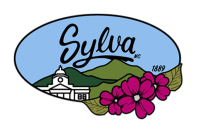Beekeeping in the mountains
Editor’s note: This column first appeared in The Smoky Mountain News in June 2003.
Honey was a primary sweetening agent for the early settlers here in the Smokies region. And to this day there are numerous beekeepers in the region.
They trace the origins of their activity back to the introduction of the honeybee into North America. Prior to that time, sweetening was obtained primarily by tapping maple trees.
The honeybee probably arrived on this continent during the 1600s. They became so numerous that Native Americans called them the “white man’s fly.”
Donald Edward Davis notes in Where There Are Mountains: An Environmental History of the Southern Appalachians (Univ. of Georgia Press, 2000) that “By the time of the American Revolution ... William Bartram found honeybees numerous ‘from Nova Scotia to East Florida.’ During his tour of the Cherokee country in 1796, Benjamin Hawkins reported that the Cherokees already ‘had bees and honey’ and were doing ‘a considerable trade in beeswax.’ Moreover, European plants such as apple trees were greatly dependent on the pollination of honeybees in order to consistently bear fruit. Certainly the honeybee also helped native plants, including Indian maize, to produce more prolifically.”
Sourwood honey is the most famous honey produced in this region. One just about can’t think about sourwood trees in bloom without thinking of the fresh sourwood honey that’s on the way. Fortunately, the blooming period of sourwood comes pretty much after that of its cousins, the mountain laurel and rhododendrons, whose honeys are toxic. Bees are said to prefer sourwood to any other tree. Stand under a sourwood in full bloom and you will hear the “song of summer” coming from the congregation of bees feeding high above.
Related Items
The early white settlers made their bee gums from black gum (Nyssa sylvatica). This use was based on close observation of the natural world. Black gum is susceptible to a heartwood decay that sets in early at the top of the tree and works downward; therefore, hollow trees are common. The settlers simply sectioned a black gum, placed the sections on end with boards over the tops and bottoms, and made an entrance hole. Gums were also constructed from rough planks.
Obtaining a hive of bees was the next step. Bee-hunters sometimes located a watering place for bees and followed them back to their homes in hollow trees. Some hunters baited the bees with corn cobs soaked in honey and then followed them home. If their home base couldn’t be located at first, the hunter simply kept setting out more bait until he finally found it.
Volume 2 of the “Foxfire” series of books provides a unique “stink-bait” bee attraction recipe. One veteran bee-hunter recalled that it was virtually foolproof: “Old-timers used to put corn cobs and dirt in a bucket, urinate in it, and then leave it for a few days. When they got back, the bees would be there.”
The same bee-hunter recalled that “he would set up two bait locations, one a short distance from the other. When the lines from each were established, one had simply to follow each to the point where they intersected, and there would be the tree. When the tree was located, a deep ‘X’ or other sign was almost always cut into the bark. Such a mark was understood by the whole community as meaning that that particular tree was already someone’s property and thus could not be cut or interfered with.”
The bee tree could be felled at any time of the year, but the best time was in September when the bee-hunter could rob both honey and bees. He would bring an axe (to fell the tree), tub (for the honey), and bee gum or tow sack (for the bees). Once the tree was down, he would locate the queen bee and place her in front of the gum or tow sack. In short order, both she and her attendants would crawl into the gum or sack and be relocated at a site near the bee-hunter’s cabin.
Naturally enough, a great deal of lore has through the years become associated with bee-keeping. In Mountain Bred (Citizen-Times Publishing Co., 1967), John Parris has a chapter titled “When the Master Dies Move the Bees.” Therein he records a conversation he had with county farm agent Paul Gibson.
“‘There’s a lot of superstitions about bee-keeping,’ Paul said. ‘One is, if a colony of bees swarm you’ve got to get out and ring a bell or beat on a dishpan before they’ll settle. I don’t know why folks believe in it, for bees don’t have a hearing organ. They go by physical vibrations’
“‘Then there’s the one old-timers swear by. They say if the master dies the bees die with him, unless the bees are moved.’”
To check out this latter belief, Parris sought out Eliza Jane Bradley, then 87, who lived on Bunches Creek and was the recent widow of a master beekeeper.
“‘Yes, the bees are all right,’ she said. ‘We moved ‘em before we took the Old Man out of the house. I saw to that no sooner than I saw he was dead. You know, they always say that if you don’t move the bees when the master dies you’ll lose them. They’ll die, too. We just moved ‘em about an inch ... Just so they wasn’t like he had put ‘em. Ever’body’ll tell you it don’t matter how much you move ‘em, just so as you move ‘em.’
“‘Well, the Old Man died about 3:30 in the morning. Right away we sent to Bryson City for the undertaker. And the very next thing, I told one of my boys that the bees would have to be moved. He and another fellow went out — it was still dark and cold — and moved the bees. There was 23 stands. Since then I’ve lost but two ... Now, I know, as sure as I’m a-settin’ here, if them bees hadn’t of been moved there wouldn’t be a one out there now. I know what I’m talkin’ about.’”
George Ellison wrote the biographical introductions for the reissues of two Appalachian classics: Horace Kephart’s Our Southern Highlanders and James Mooney’s History, Myths, and Sacred Formulas of the Cherokees. In June 2005, a selection of his Back Then columns was published by The History Press in Charleston as Mountain Passages: Natural and Cultural History of Western North Carolina and the Great Smoky Mountains. Readers can contact him at P.O. Box 1262, Bryson City, N.C., 28713, or at This email address is being protected from spambots. You need JavaScript enabled to view it..









